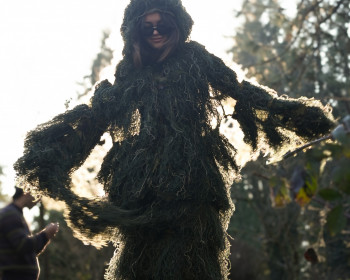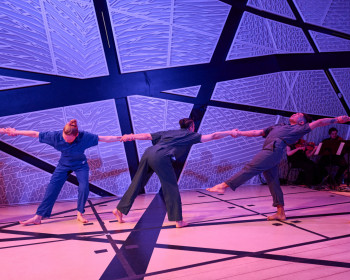Shared Discovery
Open gallery
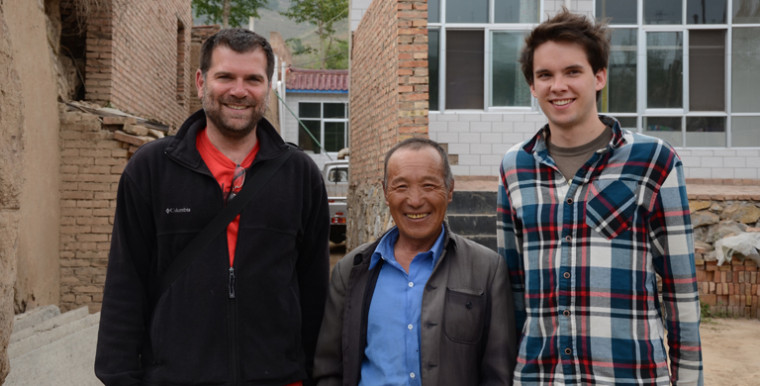
Our students and faculty don’t shy away from difficult issues and research questions. Whether they’re engaged in classroom discussion, continuing conversations during office hours, or collaborating in the lab or field, students and faculty share an intellectual curiosity and desire to find meaningful solutions to real-world problems.
Recent student-faculty collaborative projects exemplify the rich academic experiences Lewis & Clark offers: high-level research opportunities, relationships with nationally recognized professors, and life-changing overseas programs.
Collecting Huangyuan Oral History
Neil Murray ’13 and Associate Professor of Chinese Keith Dede
Broadly trained in the liberal arts, Neil—a physics major—was able to acquire new skills and information quickly as he adapted to a challenging environment.Keith Dede
What is the purpose of your research?
To gather oral histories from elderly residents of Huangyuan County in Qinghai, China. Huangyuan sits at the northeastern edge of the Tibetan plateau, at the crossroads of Han Chinese, Tibetan, and Mongolian ethno-linguistic civilizations. We hope to share stories of how people in two townships survived and prospered through the socioeconomic transformations that enveloped China in the latter half of the 20th century. Our recordings will also serve as a record of a rapidly changing rural culture, one in which fewer people know the particulars of local rituals and festivals.
Keith was always available to help me answer a question and provide feedback on my work but also encouraged personal exploration of the subjects we were researching and of the area we were in.Neil Murray
Where will your research be shared?
The results of our research, based on data from over 30 hours of interviews, will be made freely available on the Web through the auspices of Asian Highland Perspectives, an international journal devoted to the study of the cultures of the Tibetan Plateau.
What’s next for the project?
We are currently finalizing our English translations and annotation of the recorded interviews. Then, we will combine the stories with Keith’s translation of a 1909 gazetteer from Huangyuan County and distribute these materials as sources for further study of the county’s history.
-
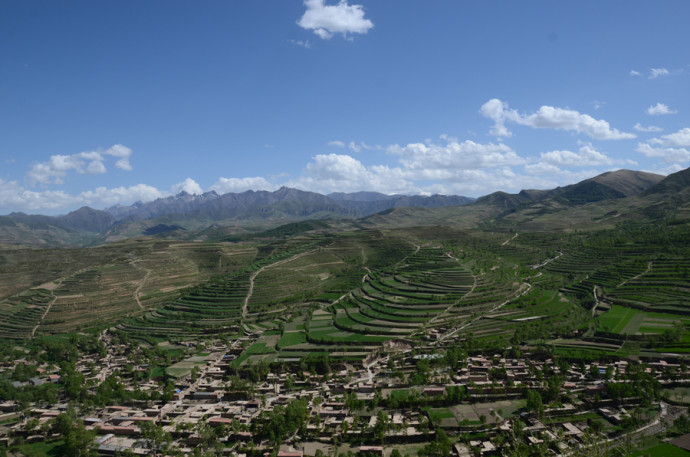 Huangyuan countryside
Huangyuan countryside -
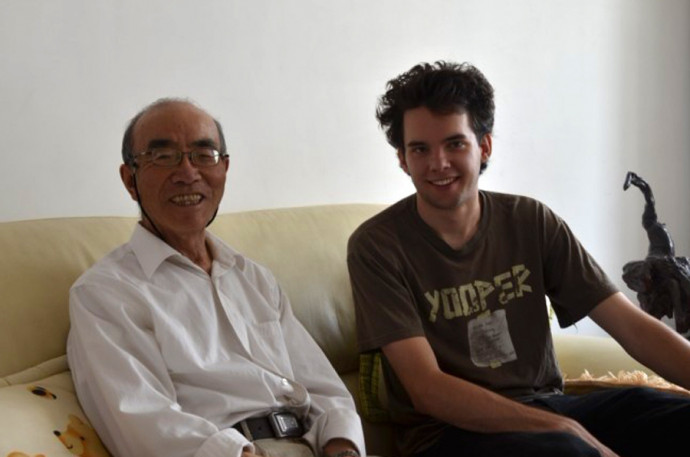 Mr. Zhu and Neil Murray in Xining
Mr. Zhu and Neil Murray in Xining -
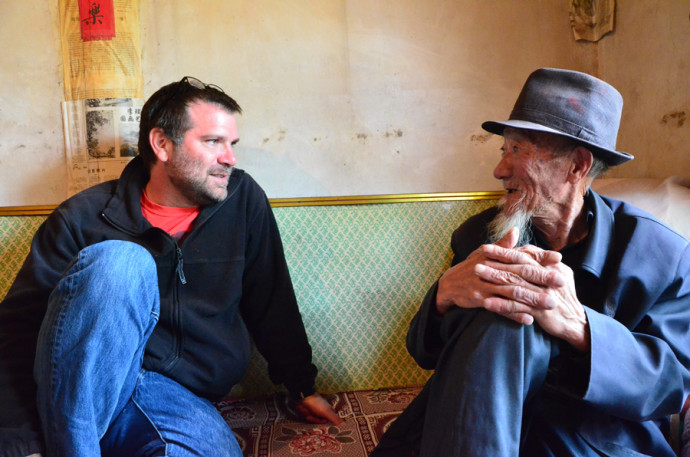 Keith Dede and Mr. Shi
Keith Dede and Mr. Shi -
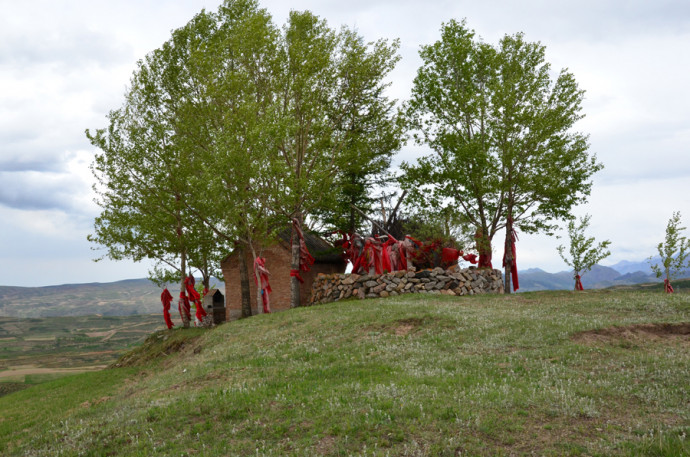 Mountain God Temple in Shijiacun
Mountain God Temple in Shijiacun -
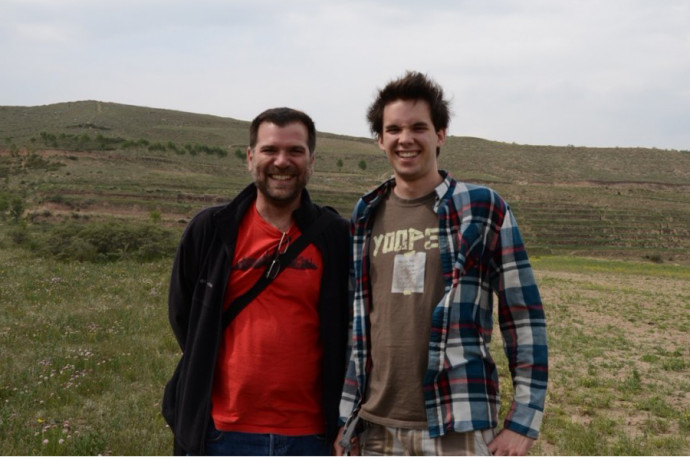 Keith and Neil in Huangyuan Hills
Keith and Neil in Huangyuan Hills
Exploring the Intersection Between Art and Neuroscience
Frances Li ’13 and Associate Professor of Art, Studio Head of Painting, and Art Chair Cara Tomlinson
What is the purpose of your research?
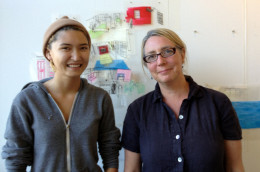
Where will your research be shared?
On campus in a two-person exhibit in January 2013. As creative researchers, Frances and I will be sharing our findings in visual form rather than in papers. We have spent the summer perfecting this model, which we believe will help strengthen emerging capabilities of the art department to address the interdisciplinary concerns of our studio students.
Our students are not afraid to take risks intellectually and formally. They know how to think creatively as well as analyze texts.Cara Tomlinson
How did you go about your research?
We began by surveying literature on art and neuroscience. We found that the more brain-centered, computational models of vision, cognition, and aesthetics left a lot to be desired from the perspective of art practitioners. Focusing only on the brain’s perception and visual system—as many neuroscientists do to explain art—leaves out the quality of feeling, body, environment, and full sensory input. So, we added readings from philosophy, cognitive science, anthropology, and psychology.
What are the outcomes of your project?
I thought the experience was particularly rewarding. The collaboration enhanced my critical abilities and allowed me independence as an artist that I’ve never had before.Frances Li
Our additional reading opened a new direction of research: embodiment and extended mind theory. These theories rely less on specific biological, brain-centered research and more on synthesizing and analyzing experiential data coupled with biology. With this series of theories, I believe art gains a parallel and equal foothold to the sciences as a testing site for understanding what it means to be a self. Artists create propositions, extend physical boundaries, and create through materials exterior to their bodies—all ways of testing, thinking, and creating a holistic emergent understanding using feedback loops in the environment.
Lewis & Clark faculty and students are engaged in collaborative research year-round. Learn about some other recent projects:
- Living Laboratory Studies at OMSI, led by psychology professors Todd Watson, Jennifer LaBounty, Janet Davidson, and Erik Nilsen.
- Investigating laser light and magnetic fields: Emily Fagan ’14, Alaina Green ’13, and Assistant Professor of Physics Shannon O’Leary
- Confronting issues of cybersecurity: Evan Damon ’13, Julian Dale BA ’12, and Professor of Computer Science Jens Mache
- Researching the effects of spider venom: Matthew Sims ’13, Maya Bendifallah ’13, Associate Professor of Chemistry Nikolaus Loening
- Investigating the relationship between behavior and diet: Katherine Garvey ’13, Alli Rotunno ’14, and Assistant Professor of Psychology Todd Watson
- Advancing artificial intelligence: Jet’aime Mullins ’13, Nick Sylvester ’13, and Associate Professor of Computer Science Peter Drake
- Investigating neuron development in zebrafish: Kyla Hamling ’14, Ian Lake ’13, Derek Warner-Reyes ’15, Leah Weston ’13, and Assistant Professor of Biology Tamily Weissman-Unni
Undergraduate Academics Admissions
More Newsroom Stories
Public Relations is located in McAfee on the Undergraduate Campus.
MSC: 19
email public@lclark.edu
voice 503-768-7970
Public Relations
Lewis & Clark
615 S. Palatine Hill Road MSC 19
Portland OR 97219
